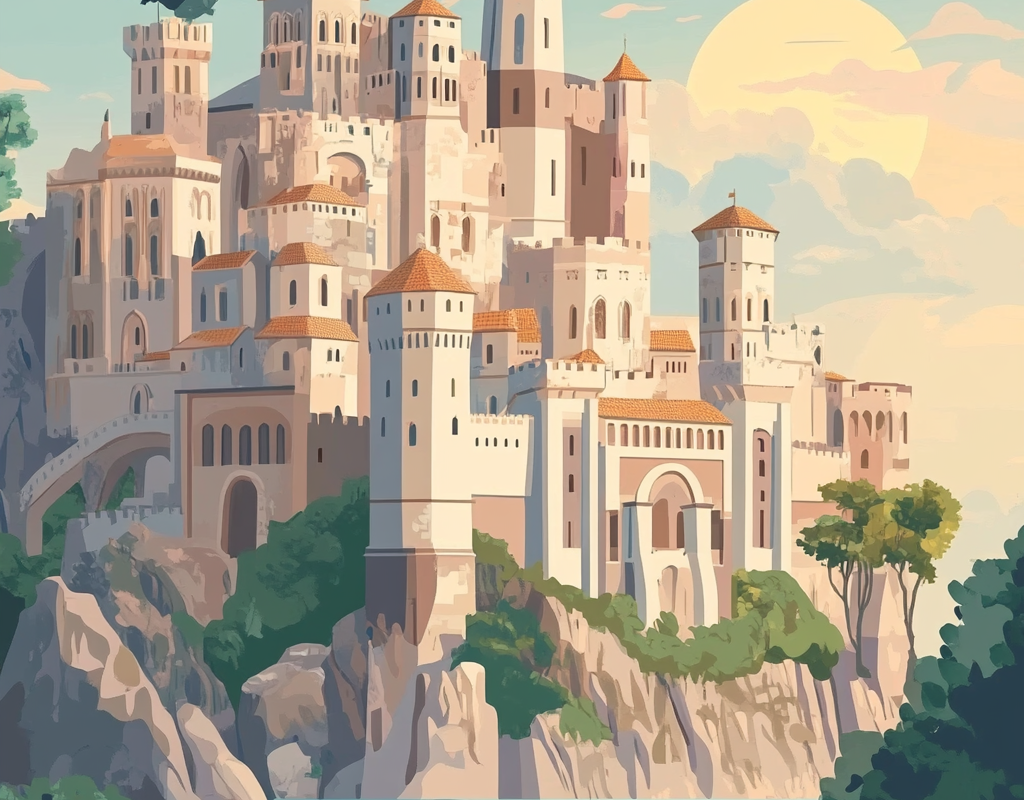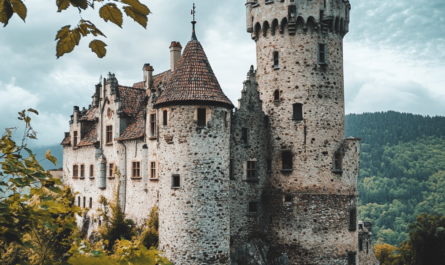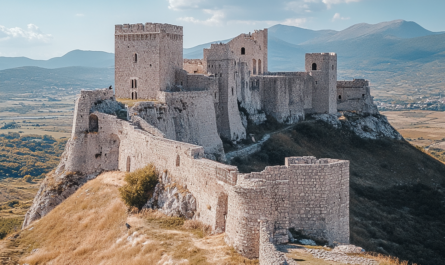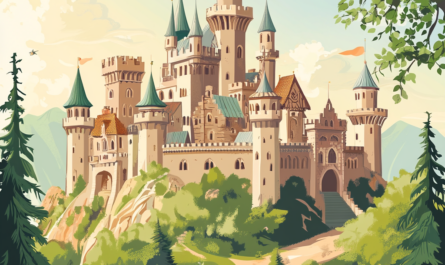Origins of European Castle Legends
European castle legends have deep roots in the history and culture of the Middle Ages, when these imposing fortresses symbolized strength, protection, and authority. Many of these legends were created to explain the grandeur of castles, attributing their construction to supernatural forces. In numerous stories, giants, fairies, or even the devil himself were said to have built these structures overnight, using magical powers. For instance, the legend of Neuschwanstein Castle in Germany tells of a mystical king who dreamed of creating a palace inspired by divine visions, blending historical truth with fantasy.
The geographical setting of a castle often shaped its associated myths. A castle perched on a treacherous cliff might be said to be inaccessible except through magical intervention, while those near forests or rivers might be linked to mythical creatures like dragons or water spirits. These tales often carried moral messages, reinforcing the ruler’s divine right or serving as cautionary tales about greed and ambition. Over time, as these castles were passed down through generations, the stories surrounding them grew richer, turning historical sites into symbols of imagination and wonder.
Famous Haunted Castles and Their Ghostly Tales
Across Europe, countless castles are famed for their ghostly residents, with haunting tales that reflect their often dark and violent histories. The Tower of London is perhaps the most famous, said to be haunted by Anne Boleyn, whose ghost reportedly wanders the grounds carrying her severed head. Similarly, Edinburgh Castle in Scotland is surrounded by tales of ghostly pipers, spectral soldiers, and prisoners who met tragic ends. Visitors claim to feel sudden chills, hear unexplained noises, or even see apparitions in these ancient halls.
Haunted legends often emerge from the violent events that occurred within these walls—executions, betrayals, and sieges. In Ireland, Leap Castle is said to be one of the most haunted castles in the world, housing an “Elemental,” a spirit described as a terrifying, shadowy figure. The atmosphere of these castles, with their dark corridors, hidden chambers, and eerie silence, enhances the sense of the supernatural. Today, many of these haunted sites have become major tourist attractions, drawing thrill-seekers and paranormal enthusiasts eager to experience the legends firsthand.
Myths Surrounding Hidden Treasures in Castles
The idea of hidden treasures buried within castle walls or beneath their foundations is one of the most enduring myths in European history. Castles like Neuschwanstein in Germany and Château de Chambord in France are said to contain secret rooms and tunnels filled with gold, jewels, and priceless artifacts. Legends often describe these treasures as being protected by elaborate traps, powerful curses, or supernatural guardians to ensure they remain undiscovered. These myths have inspired countless treasure hunters over the centuries, some of whom dedicated their lives to uncovering these elusive riches.
In many stories, maps, riddles, or coded messages are said to lead to the treasure, adding a layer of mystery and challenge. These myths are frequently tied to historical events, such as rulers hiding their wealth during invasions or rebellious nobles safeguarding their fortunes. The legend of the Knights Templar, who supposedly hid their immense treasure in castles across Europe, continues to captivate modern audiences. While evidence of these treasures is scarce, the allure of these stories keeps the hunt alive, blending historical intrigue with fantastical elements.
Legendary Battles and Heroes Tied to Castles
Castles were not just homes for royalty but also fortresses of defense, often becoming the epicenter of legendary battles and heroic tales. For example, the Siege of Château Gaillard in France tells the story of a relentless attack on the castle by King Philip II of France, showcasing the strategic and symbolic importance of these strongholds. Similarly, Dover Castle in England is renowned for its role in defending the country from foreign invaders, earning it the nickname “The Key to England.”
Many legends surrounding these battles involve mythical figures or supernatural elements. Dragons guarding castle gates, enchanted swords wielded by brave knights, and ghostly armies appearing in times of need are common themes in these stories. Richard the Lionheart is one such historical figure whose association with castles, like Château Gaillard, has been romanticized to the point of legend. These stories are not only a testament to the strength of medieval fortifications but also to the enduring appeal of heroism, resilience, and the triumph of good over evil.
Romantic Myths and Stories of Castle Life
The romanticized image of life in castles has been shaped by centuries of literature and storytelling, portraying these fortresses as places of love, intrigue, and chivalry. Tales of knights performing daring feats to win the hearts of their beloved princesses are common, as are stories of star-crossed lovers meeting in secret. Castles are often depicted as the settings for grand balls, poetic serenades, and whispered promises under moonlit towers.
However, these stories often gloss over the harsh realities of medieval life in castles, such as the freezing winters, rigid social hierarchies, and constant threats of war. Despite this, the myths of romantic castle life persist, influencing how these structures are perceived today. Many modern tourists visit castles hoping to glimpse the elegance and drama described in these tales. Whether through the lens of history or fantasy, the allure of castles as symbols of love and romance remains as strong as ever.
Modern Interpretations of Castle Legends and Their Impact
Castles continue to captivate the imagination, evolving from historical landmarks to central symbols in modern storytelling and entertainment. Their rich history and legends have inspired countless works of fiction, blending fantasy and history in unique ways.
- Castles are frequently portrayed in films and books, from fairy tales like “Cinderella” to epic sagas such as “Game of Thrones.”
- Live-action historical reenactments at castles offer visitors a chance to step into the past, experiencing the legends firsthand.
- Ghost tours and paranormal events keep the haunted aspects of castle legends alive for thrill-seekers and the curious.
- Modern architecture and design often draw inspiration from the grandeur and mystique of medieval castles, influencing everything from homes to theme parks.
- The tourism industry has embraced castle legends, blending historical education with entertainment to attract visitors worldwide.
These interpretations ensure that the magic and mystery of castles endure, allowing them to remain relevant and inspiring in contemporary culture. Whether as settings for fantasy adventures or as historical sites, castles bridge the gap between the real and the mythical.
Questions and Answers
Answer 1: Supernatural beings were used to explain the grandeur and complexity of castles, which seemed beyond human capability in the Middle Ages.
Answer 2: The Tower of London is said to be haunted by Anne Boleyn, while Leap Castle is home to a mysterious “Elemental” spirit.
Answer 3: These legends often involve hidden vaults, curses, and cryptic maps leading to unimaginable riches.
Answer 4: Stories often include dragons, enchanted knights, and ghostly armies aiding in battles.
Answer 5: They have shaped castles as symbols of love, intrigue, and elegance, often overshadowing historical realities.




